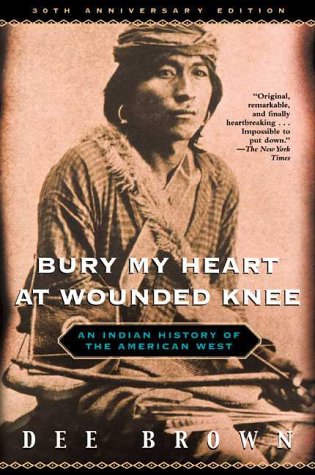Reviewed by gmcgregor on
Since he focuses on the era of Manifest Destiny (there's some information about how European arrival in the Americas played out, but it's a small portion of the book), Brown confines his focus to the West. It's heartwrenching to read about from the perspective of now, because you know that each chief that tries to negotiate in good faith with the white people will eventually be cheated and that each warrior who tries to fight back against the people who were eroding their way of life will eventually lose. Brown uses as many Native American sources as possible to show how the westward march of white settlers progressed from the point of view of the people who were pushed away from the land and lifestyle they'd always known in order to make room. With each passing year, restrictions on their territory become tighter and tighter, but their inability to safeguard even the small promises that they were able to extract is just relentlessly sad to read about.
I think it's important to wrestle with all parts of American history, and remember that many of what we think of as gains come from losses by someone else. As such, I'd definitely recommend this book to anyone who's interested in how this country has treated its original residents.
Reading updates
- Started reading
- 30 January, 2017: Finished reading
- 30 January, 2017: Reviewed
